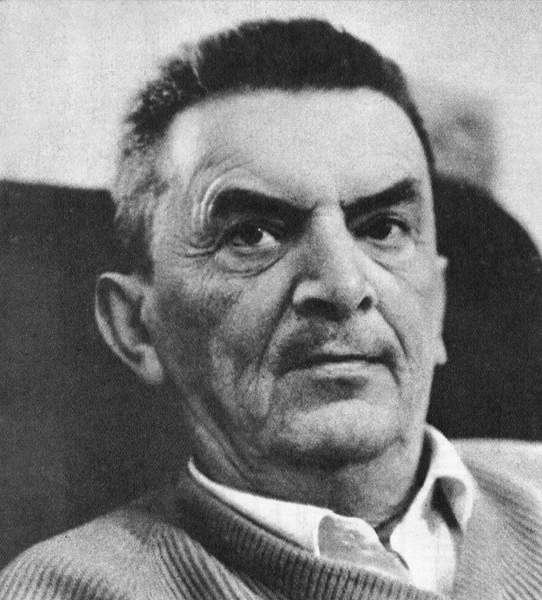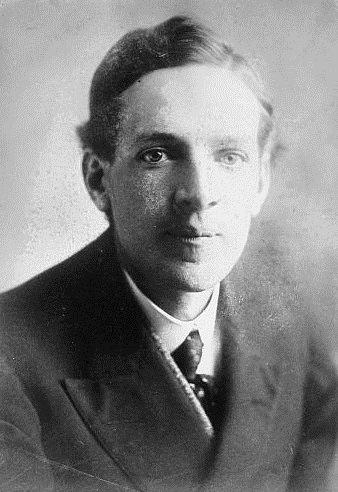|
Sygnały Magazine
''Sygnały'' Magazyn (''Signals'' Magazine) was a Polish cultural and social magazine published 1933–1939 in Lwów (Lemberg, today Lviv, Ukraine). It was a leading periodical of the leftist Polish intelligentsia. The journal started as a 12-page monthly and was subsequently published once every two weeks, with editions of up to 32 pages. Sygnały was published in the tabloid format, similar to the ''New York Times'' at about 56x40 cm (22x16 inches). Editors Its editor-in-chief was Karol Kuryluk, and the editorial committee included Tadeusz Banaś, Stanisława Blumenfeld, Halina Górska, Tadeusz Hollender, Anna Kowalska, Andrzej Kurczkowski and Marian Prominski. Polish contributors Among the literary contributors from Poland figured Erwin Axer, Maria Dąbrowska, Jan Kasprowicz, Stanisław Jerzy Lec, Bruno Schulz, Leopold Staff, Julian Tuwim, Debora Vogel and Józef Wittlin. International contributors International literary contributors included Henri Barbusse, ... [...More Info...] [...Related Items...] OR: [Wikipedia] [Google] [Baidu] |
Julian Tuwim
Julian Tuwim (13 September 1894 – 27 December 1953), known also under the pseudonym "Oldlen" as a lyricist, was a Polish poet, born in Łódź, then part of the Russian Partition. He was educated in Łódź and in Warsaw where he studied law and philosophy at Warsaw University. After Poland's return to independence in 1918, Tuwim co-founded the Skamander group of experimental poets with Antoni Słonimski and Jarosław Iwaszkiewicz. He was a major figure in Polish literature, admired also for his contribution to children's literature. He was a recipient of the prestigious Golden Laurel of the Polish Academy of Literature in 1935.Julian Tuwim (1894-1953) ''Qlturka.pl.'' Europejski Fundusz Rozwoju Regionalnego. Retrieved December 12, 2011. Life and work Tuwim was born into a ...[...More Info...] [...Related Items...] OR: [Wikipedia] [Google] [Baidu] |
Henryk Gotlib
Henryk Gotlib (10 January 1890 – 30 December 1966) was a Polish painter, draughtsman, printmaker, and writer, who settled in England during World War II and made a significant contribution to modern British art. He was profoundly influenced by Rembrandt, and the European Expressionist painters. Gotlib was a leading member of the Polish avant-garde 'Formist' movement in the interwar Poland. Life Gotlib was born into a middle-class family in Kraków, where he gained his earliest artistic training at the Academy of Fine Arts in Krakow from 1908 to 1910. Due to pressure from his parents, he also read law at the university in Krakow during this period, although it was clear from an early age that he had a profound passion for art. His earliest portraits of his mother, in which he experimented with a variety of styles including that of Vuillard and late Cubism, date back to when he was just 16 years old. He continued his artistic training at the Kunstgewerbeschule in Vienna ( ... [...More Info...] [...Related Items...] OR: [Wikipedia] [Google] [Baidu] |
Max Ernst
Max Ernst (2 April 1891 – 1 April 1976) was a German (naturalised American in 1948 and French in 1958) painter, sculptor, printmaker, graphic artist, and poet. A prolific artist, Ernst was a primary pioneer of the Dada movement and Surrealism in Europe. He had no formal artistic training, but his experimental attitude toward the making of art resulted in his invention of frottage (surrealist technique), frottage—a technique that uses pencil rubbings of textured objects and relief surfaces to create images—and Grattage (art), grattage, an analogous technique in which paint is scraped across canvas to reveal the imprints of the objects placed beneath. Ernst is noted for his unconventional drawing methods as well as for creating novels and pamphlets using the method of collages. He served as a soldier for four years during World War I, and this experience left him shocked, traumatised and critical of the modern world. During World War II he was designated an "undesirable forei ... [...More Info...] [...Related Items...] OR: [Wikipedia] [Google] [Baidu] |
Xawery Dunikowski
Xawery Dunikowski (; 24 December 1875 – 26 January 1964) was a Polish sculptor and artist, notable for surviving Auschwitz concentration camp, and best known for his Neo-Romantic sculptures and Auschwitz-inspired art. Biography Dunikowski was born in Kraków, a city he had an affinity for and would also use as the basis for a collection of art. When he was twelve his family moved to Warsaw, and after finishing his education in a technical school he studied sculpture under Boleslaw Syrewicz and Leon Wasilkowski. At twenty one, Dunikowski moved back to Kraków to study sculpture at the School of Fine Arts under Konstanty Laszczka, admirer of Auguste Rodin, and under Alfred Daun. He studied painting with Jan Stanisławski and after being enrolled for three years, he graduated with honors. In 1902 Dunikowski began teaching sculpture at the Academy of Fine Arts in Warsaw, a professorship he would hold until 1909 when he was appointed the Chair of Sculpture Department at ... [...More Info...] [...Related Items...] OR: [Wikipedia] [Google] [Baidu] |
Jan Cybis
Jan Cybis (16 February 1897 - 13 December 1972) was a prominent Polish painter and art teacher. Biography Cybis was born in Fröbel (now Wróblin, Opole Voivodeship, Poland) and studied at the Jan Matejko Academy of Fine Arts in Kraków, settling in that city from 1934. The German Expressionist Otto Mueller was his mentor. He studied under Józef Pankiewicz among others, developing a reputation for a post-impressionist style using rich, saturated color influenced by the French. In the 1930s Cybis was among the most prominent of the Kapists or Paris Committee, a significant group of Polish painters of the time. His wife Hanna Rudzka-Cybisowa (1897-1988) was a notable painter in her own right and also active as a Kapist. Among other recognitions, Cybis was awarded the Polish communist government's Order of the Banner of Work in 1949 and the Medal of the 10th Anniversary of People's Poland in 1955, although during the Socialist Realism period Cybis was prevented from teaching ... [...More Info...] [...Related Items...] OR: [Wikipedia] [Google] [Baidu] |
Alexander Archipenko
Alexander Porfyrovych Archipenko (also referred to as Olexandr, Oleksandr, or Aleksandr; uk, Олександр Порфирович Архипенко, Romanized: Olexandr Porfyrovych Arkhypenko; February 25, 1964) was a Ukrainian and American avant-garde artist, sculptor, and graphic artist. He was one of the first to apply the principles of Cubism to architecture, analyzing human figure into geometrical forms. Biography Alexander Archipenko was born in Kyiv (Russian Empire, now Ukraine) in 1887, to Porfiry Antonowych Archipenko and Poroskowia Vassylivna Machowa Archipenko; he was the younger brother of Eugene Archipenko. From 1902 to 1905 he attended the Kyiv Art School (KKHU). In 1906 he continued his education in the arts at Serhiy Svetoslavsky (Kyiv), and later that year had an exhibition there with Alexander Bogomazov. He then moved to Moscow where he had a chance to exhibit his work in some group shows. Archipenko moved to Paris in 1908 and quickly enrolled in the É ... [...More Info...] [...Related Items...] OR: [Wikipedia] [Google] [Baidu] |
Paul Valéry
Ambroise Paul Toussaint Jules Valéry (; 30 October 1871 – 20 July 1945) was a French poet, essayist, and philosopher. In addition to his poetry and fiction (drama and dialogues), his interests included aphorisms on art, history, letters, music, and current events. Valéry was nominated for the Nobel Prize in Literature in 12 different years. Biography Valéry was born to a Corsican father and Genoese-Istrian mother in Sète, a town on the Mediterranean coast of the Hérault, but he was raised in Montpellier, a larger urban center close by. After a traditional Roman Catholic education, he studied law at university and then resided in Paris for most of the remainder of his life, where he was, for a while, part of the circle of Stéphane Mallarmé. In 1900, he married Jeannine Gobillard, a friend of Stéphane Mallarmé's family, who was also a niece of the painter Berthe Morisot. The wedding was a double ceremony in which the bride's cousin, Berthe Morisot's daughter, Ju ... [...More Info...] [...Related Items...] OR: [Wikipedia] [Google] [Baidu] |
Upton Sinclair
Upton Beall Sinclair Jr. (September 20, 1878 – November 25, 1968) was an American writer, muckraker, political activist and the 1934 Democratic Party nominee for governor of California who wrote nearly 100 books and other works in several genres. Sinclair's work was well known and popular in the first half of the 20th century, and he won the Pulitzer Prize for Fiction in 1943. In 1906, Sinclair acquired particular fame for his classic muck-raking novel, ''The Jungle'', which exposed labor and sanitary conditions in the U.S. meatpacking industry, causing a public uproar that contributed in part to the passage a few months later of the 1906 Pure Food and Drug Act and the Meat Inspection Act. In 1919, he published ''The Brass Check'', a muck-raking exposé of American journalism that publicized the issue of yellow journalism and the limitations of the "free press" in the United States. Four years after publication of ''The Brass Check'', the first code of ethics for journ ... [...More Info...] [...Related Items...] OR: [Wikipedia] [Google] [Baidu] |
Bertrand Russell
Bertrand Arthur William Russell, 3rd Earl Russell, (18 May 1872 – 2 February 1970) was a British mathematician, philosopher, logician, and public intellectual. He had a considerable influence on mathematics, logic, set theory, linguistics, artificial intelligence, cognitive science, computer science and various areas of analytic philosophy, especially philosophy of mathematics, philosophy of language, epistemology, and metaphysics.Stanford Encyclopedia of Philosophy"Bertrand Russell" 1 May 2003. He was one of the early 20th century's most prominent logicians, and a founder of analytic philosophy, along with his predecessor Gottlob Frege, his friend and colleague G. E. Moore and his student and protégé Ludwig Wittgenstein. Russell with Moore led the British "revolt against idealism". Together with his former teacher A. N. Whitehead, Russell wrote ''Principia Mathematica'', a milestone in the development of classical logic, and a major attempt to reduce the whole ... [...More Info...] [...Related Items...] OR: [Wikipedia] [Google] [Baidu] |
Carl Von Ossietzky
Carl von Ossietzky (; 3 October 1889 – 4 May 1938) was a German journalist and pacifist. He was the recipient of the 1935 Nobel Peace Prize for his work in exposing the clandestine German re-armament. As editor-in-chief of the magazine ''Die Weltbühne'', Ossietzky published a series of exposés in the late 1920s, detailing Germany's violation of the Treaty of Versailles by rebuilding an air force (the predecessor of the Luftwaffe) and training pilots in the Soviet Union. He was convicted of treason and espionage in 1931 and sentenced to eighteen months in prison but was granted amnesty in December 1932. Ossietzky continued to be a vocal critic against German militarism after the Nazis' rise to power. Following the 1933 Reichstag fire, Ossietzky was again arrested and sent to the Esterwegen concentration camp near Oldenburg. In 1936, he was awarded the 1935 Nobel Peace Prize but was forbidden from travelling to Norway and accepting the prize. After enduring years of mistre ... [...More Info...] [...Related Items...] OR: [Wikipedia] [Google] [Baidu] |
André Malraux
Georges André Malraux ( , ; 3 November 1901 – 23 November 1976) was a French novelist, art theorist, and minister of cultural affairs. Malraux's novel ''La Condition Humaine'' (Man's Fate) (1933) won the Prix Goncourt. He was appointed by President Charles de Gaulle as information minister (1945–46) and subsequently as France's first cultural affairs minister during de Gaulle's presidency (1959–1969). Early years Malraux was born in Paris in 1901, the son of Fernand-Georges Malraux (1875–1930) and Berthe Félicie Lamy (1877–1932). His parents separated in 1905 and eventually divorced. There are suggestions that Malraux's paternal grandfather committed suicide in 1909."Biographie détaillée" , André Malraux Website, accessed 3 September 2010 Malraux was raised by his mother, maternal aun ... [...More Info...] [...Related Items...] OR: [Wikipedia] [Google] [Baidu] |






